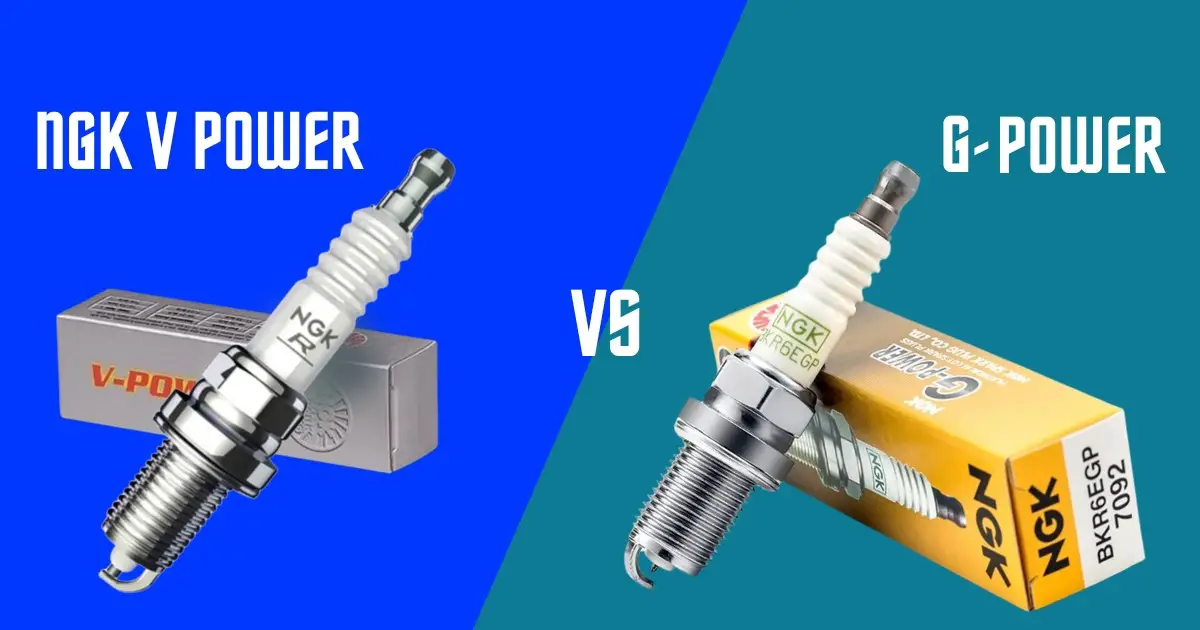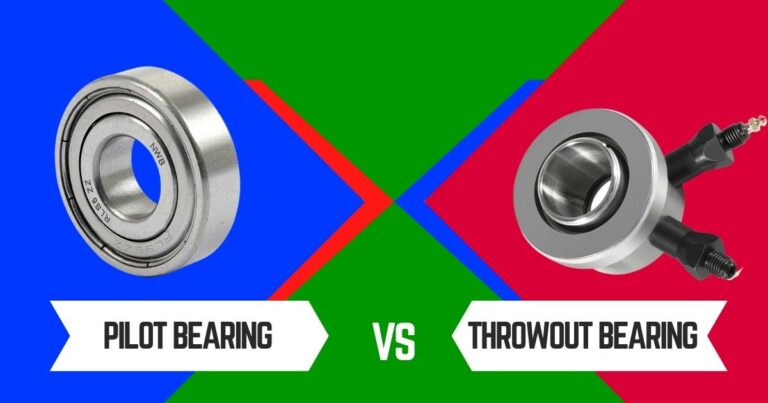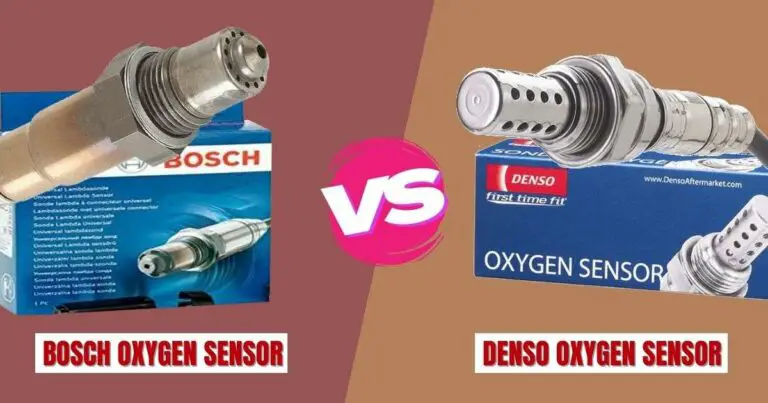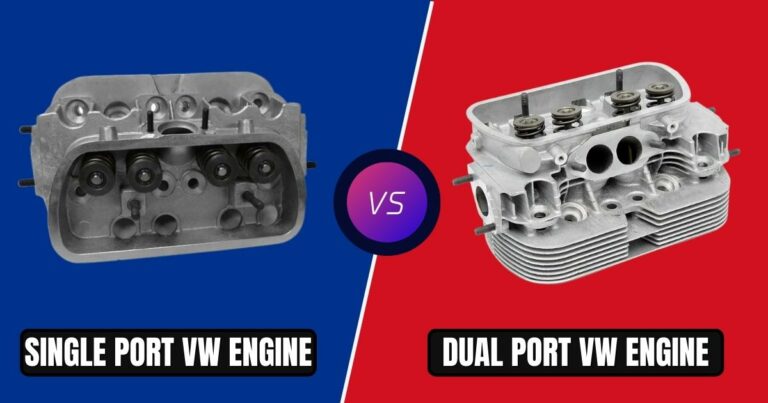An In-Depth Analysis of NGK V-Power vs G-Power Spark Plugs
The spark plug is perhaps one of the most sought-after engine accessories, and because of this, NGK has consistently maintained its position as a leader in the industry. However, it is important to acknowledge that not all NGK spark plugs are made equal.
A while ago, NGK introduced V-Power and G-Power spark plugs, strictly designed to enhance ignition and fuel efficiency. While their performance level is almost consistent, they cater to different performance needs and engine requirements. We took time to dig into NGK V-Power vs G-Power to find out how they differ.
NGK V-Power Overview
NGK V-Power spark plugs come in a unique V-shaped design on the electrode, which enhances ignitability and reduces quenching. NGK V-Power spark plugs are known for their better fuel efficiency, improved throttle response, and overall engine performance. These spark plugs are available for various types of vehicles, including cars, motorcycles, and other gasoline-powered engines. So, are NGK V-Power spark plugs good? Let’s find out!
Key Features of NGK V-Power Spark Plugs
Trivalent Metal Plating
Trivalent metal plating is a protective coating applied to the surface of spark plugs through an electroplating process. This plating consists of trivalent metals, typically zinc. The primary purpose of trivalent metal plating is to provide a durable barrier against environmental factors such as moisture, chemicals, and heat.
Furthermore, trivalent metal plating helps to reduce the risk of seizing, which occurs when two metal surfaces become tightly bound together due to corrosion and other factors. Seizing can make it difficult to remove spark plugs during maintenance or replacement, leading to damage to the engine.
Corrugated Ribs
Corrugated ribs are raised, rib-like structures incorporated along the ceramic portion of the spark plug to prevent flashover. A flashover occurs when the spark jumps to an unintended path, leading to misfires and reduced engine performance. The ribs help to ensure that the spark travels along the desired path without straying to unintended surfaces, such as the insulator or cylinder head.
Pure Alumina Silicate Ceramic Insulator
This insulator separates the central electrode, which produces the spark, from the metal shell of the spark plug. The use of pure alumina silicate ceramic provides superior strength and better heat transfer properties. This ensures the spark plug can withstand high temperatures and thermal cycling without compromising performance.
Copper Core
Copper is an excellent conductor of both heat and electricity. When used as the core material in a spark plug, it facilitates the efficient transfer of heat away from the tip of the electrode and into the surrounding metal shell of the spark plug. It also helps dissipate excess heat generated during the combustion process, particularly in high-performance engines or under heavy load conditions.
Triple Seals
NGK V-Power spark plugs are equipped with triple seals to help maintain proper compression and prevent damage to the spark plug and other engine components. The first seal is used to prevent the escape of combustion gases from the combustion chamber.
The secondary seal serves as an additional barrier against gas and oil leakage. On the other hand, the third seal is specifically designed to prevent engine oil from seeping into the combustion chamber or onto the spark plug’s electrode.
Advantages of NGK V-Power Spark Plugs
- Improved ignitability and smoother engine operation.
- NGK V-Power spark plugs are known for their durability, thanks to features such as trivalent metal plating.
- Better engine performance, including increased power output and fuel efficiency
- Compatibility with different engine types and applications.
Limitations of NGK V-Power Spark Plugs
- Might not fit all vehicles.
- Performance may not be optimal for high-performance or modified engines.
- Extreme conditions could affect performance.
- Longevity may not match OE or premium spark plugs.
NGK G-Power Overview
NGK G-Power spark plugs series are renowned for their ability to ignite the air-fuel mixture efficiently within the combustion chamber. These spark plugs are designed with a focus on enhancing engine performance, fuel efficiency, and durability. Overall, NGK G-Power spark plugs are considered a reliable choice for both everyday driving and performance applications.
Key Features of NGK G-Power Spark Plugs
Single Platinum Tip
G-Power spark plugs feature a single platinum tip on the center electrode. Platinum is highly resistant to erosion and corrosion, ensuring consistent performance over an extended period. Other properties include high melting point and electrical conductivity, which ensures more focused sparks and improved ignitability.
Pure Copper Core
These spark plugs incorporate a core made of 98% pure copper. Copper is an excellent conductor of electricity and heat, aiding in efficient spark generation and heat dissipation. This feature is crucial for ensuring reliable starting, smooth engine operation, and optimal fuel efficiency.
Trapezoidal Ground Electrode
The trapezoidal shape of the ground electrode is specifically designed to optimize spark exposure to the air-fuel mixture within the combustion chamber. This design facilitates faster flame propagation and more complete combustion, resulting in improved engine performance and enhanced fuel efficiency. Additionally, the trapezoidal shape helps minimize electrode wear, contributing to the spark plug’s longevity.
High-Grade Alumina Silicate Ceramic Insulator
The spark plugs utilize high-grade alumina silicate ceramic for their insulator. This material provides strong insulation properties, ensuring reliable spark generation and prevention of electrical leakage.
Cold-Rolled Threads
The threads of NGK G-Power spark plugs are manufactured using a cold-rolling process, which compresses and hardens the metal to improve its strength and resistance to deformation. This feature helps prevent cross-threading during installation and minimizes the risk of damage to cylinder heads.
Advantages of NGK G-Power Spark Plugs
- Quick starting and superior ignition in all conditions.
- Extended lifespan of electrodes.
- Enhanced acceleration with improved fuel efficiency.
- Decreased electrode wear.
Limitations of NGK G-Power Spark Plugs
- Not universally compatible with all vehicle makes and models.
- The materials used in NGK G-Power plugs may not be ideal for extreme conditions.
- G-Power plugs may fail to consistently deliver optimal performance across all engine types and driving conditions.
- Some aftermarket engine modifications might not be compatible with G-Power spark plugs.

NGK G-Power vs V-Power- Different or Same?
The primary role of spark plug is to facilitate combustion and provide the necessary power for the engine’s operation. At first glance, it is almost impossible to tell G-Power vs V-Power NGK apart. Both products are designed to fit about any vehicle while allowing car owners to optimize engine performance.
Now, should you go for a G-Power or V-Power spark plug? Well, we’d say, there is no one-size-fits-all answer. Both NGK G-Power and V-Power spark plugs are engineered to enhance engine performance and efficiency, but they may have different features and specifications tailored to specific vehicle applications or performance requirements.
NGK G-Power spark plugs typically feature a platinum alloy center electrode, which offers excellent durability and wear resistance. The ground electrode is also constructed from high-quality material to ensure reliable performance over an extended period.
On the flip side, NGK V-Power spark plugs usually have a traditional copper core center electrode. Copper is an excellent conductor of electricity and heat, making these spark plugs ideal for applications where high-performance ignition is required.
The electrode configuration in G-Power spark plugs may vary depending on the specific model and application. However, they typically feature a fine-wire center electrode design, which promotes more efficient spark formation and combustion.
NGK V-Power spark plugs often feature a V-groove or similar design on the ground electrode. This design helps to improve ignitability and reduce quenching, leading to more consistent combustion and better engine performance.
When it comes to service life, G-Power spark plugs are known for their excellent longevity and durability. The platinum alloy center electrode offers superior resistance to wear and erosion, ensuring consistent performance over an extended period.
While V-Power spark plugs may not have the same level of longevity, they still provide reliable performance and excellent value for money. The copper core center electrode offers efficient heat dissipation, which can help prevent pre-ignition and detonation in high-performance engines.
NGK G-Power spark plugs are suitable for a wide range of vehicles, including daily drives and high-performance vehicles. They are often recommended for vehicles with electronic ignition systems and modern engine designs.
NGK V-Power spark plugs are also versatile and can be used in various applications, including older vehicles with conventional ignition systems. They are particularly well-suited for turbocharged or supercharged engines and other applications that require reliable ignition.
Now, since a spark plug is a critical element of the engine, it is always a good idea to review the specs and features of each option carefully. Consider how you plan to use the vehicle— whether it’s for daily commuting, racing, or any other specific purpose. Factors such as engine type, fuel efficiency, power output, and manufacturer recommendations should also influence your decision.
The Bottom Line
Without a quality spark plug, your vehicle will struggle to ignite efficiently, leading to poor performance and engine misfiring or stalling. The good thing is that both V-Power and G-Power spark plugs guarantee you a smooth ignition every time you start your engine. Ultimately, the choice between them depends on your specific vehicle and performance needs, but rest assured, both options are designed to deliver dependable ignition performance.







